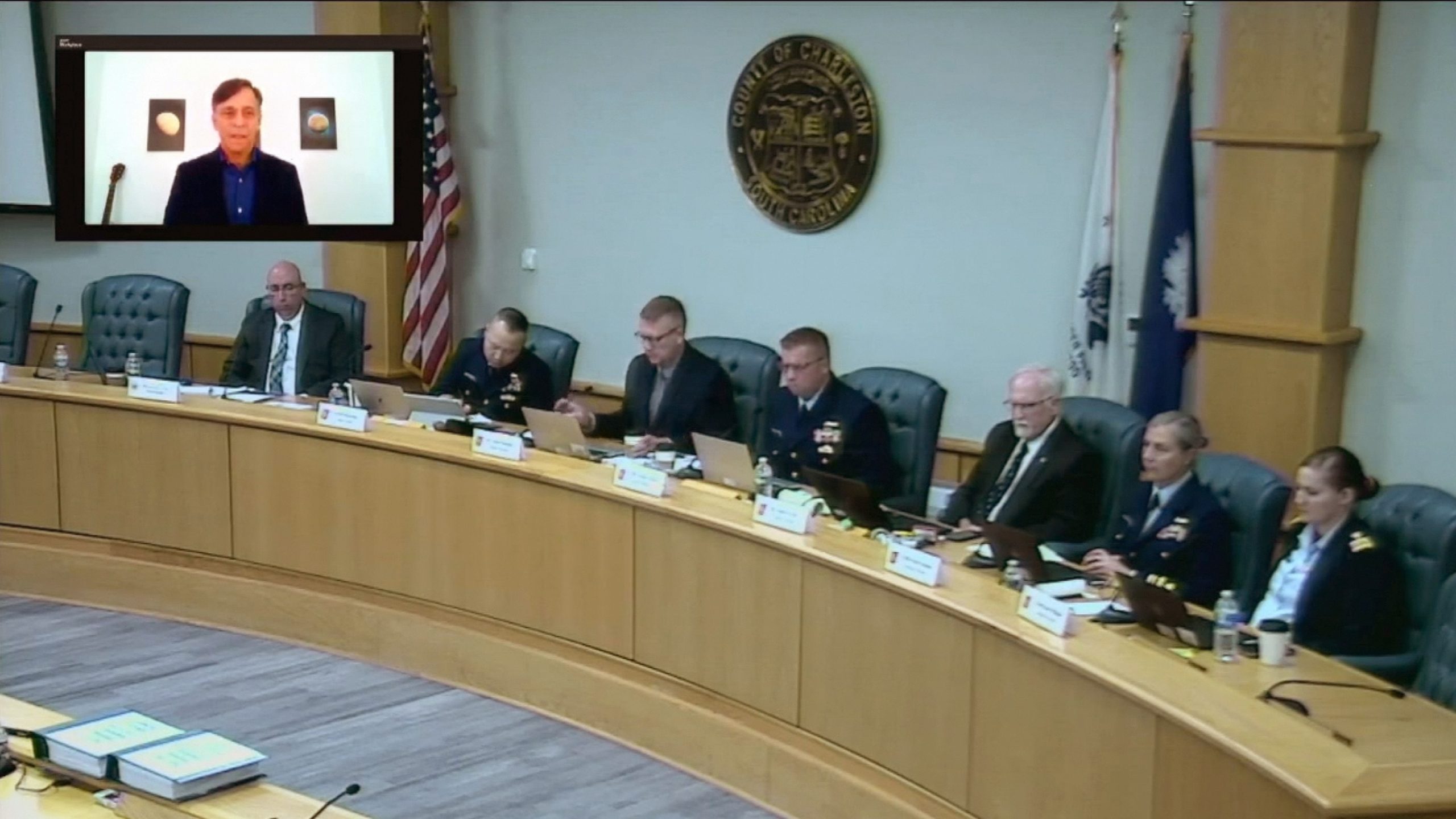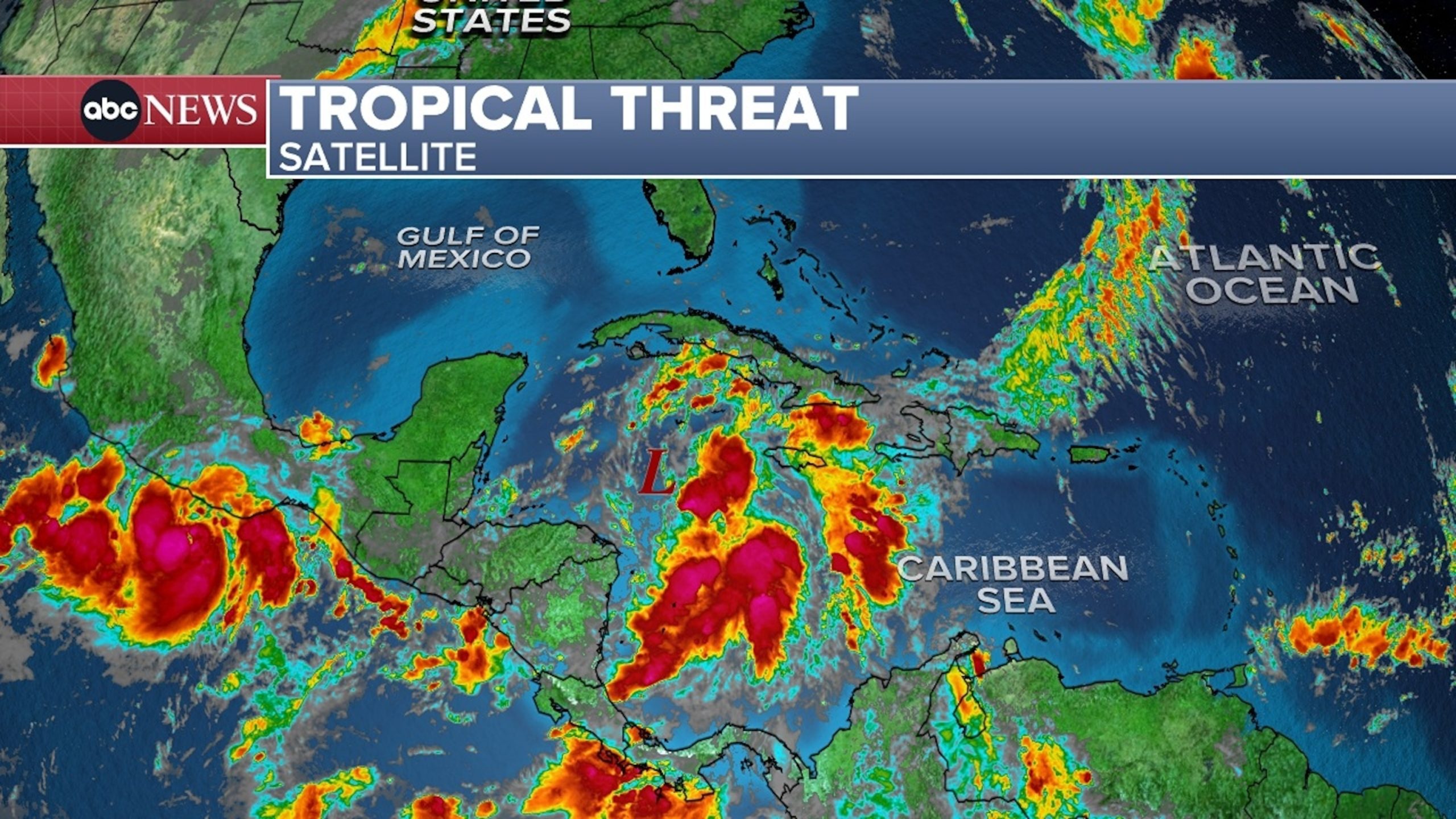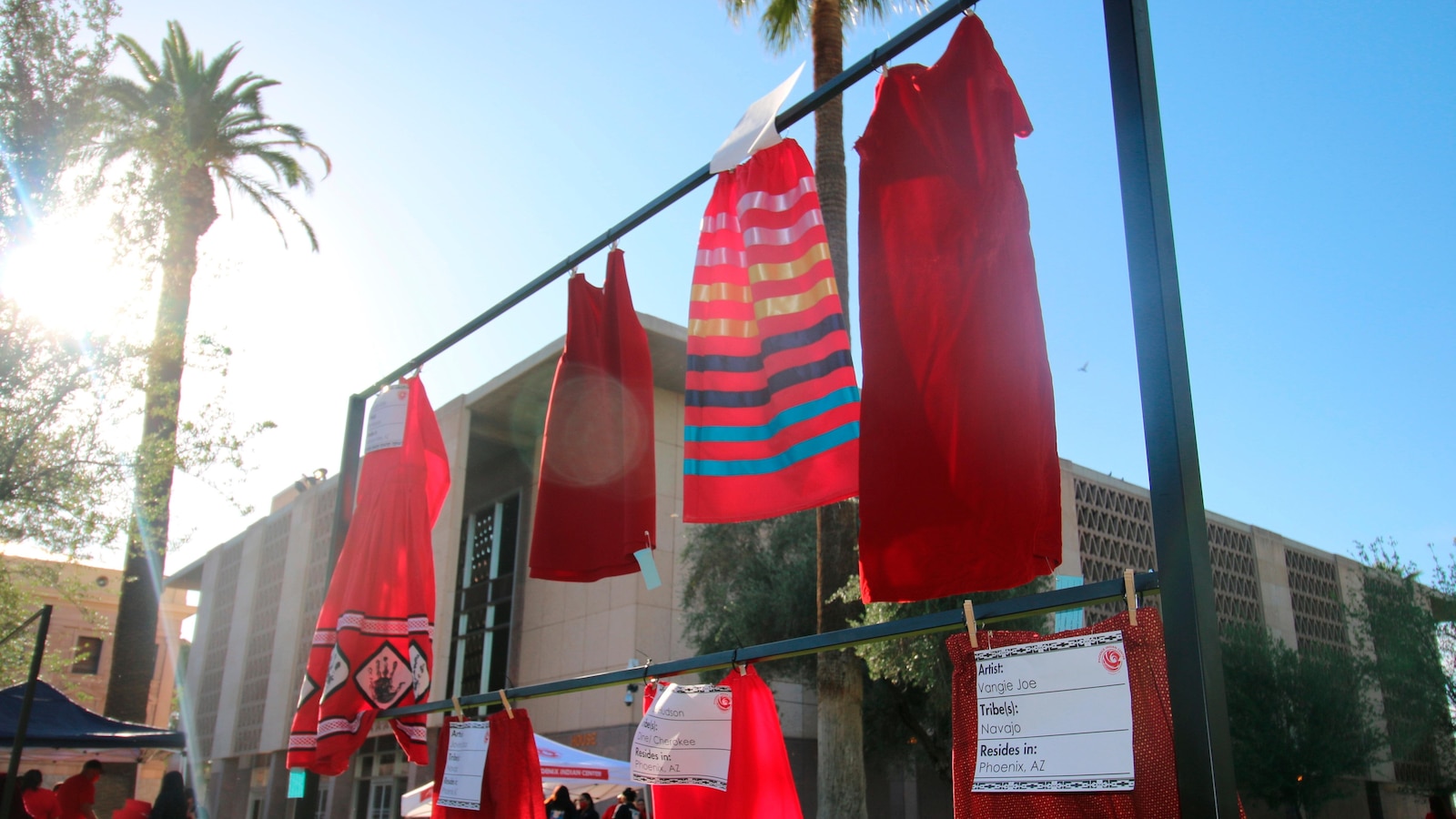The co-founder and former CEO of OceanGate said the company originally never planned to build its own submersibles while testifying during a hearing on the deadly implosion of its Titan sub.
Guillermo Sohnlein co-founded OceanGate in 2009 with Stockton Rush, who was one of the five people killed in a catastrophic implosion while on a deep-sea voyage to see the Titanic wreckage in June 2023. He left the company in 2013, years before OceanGate began conducting dives to the Titanic with the Titan, an experimental, unclassified vessel.
While testifying on Monday during the U.S. Coast Guard’s two-week hearing on the implosion, Sohnlein said when they founded the company, “developing our own subs was not in the original plans.”
He said their vision was to acquire a fleet of deep-diving submersibles that could carry five people up to 6,000 meters that would be available for charter. They didn’t want the subs to require a dedicated mothership or support ship so that they could easily go anywhere in the world and operate off any ship.
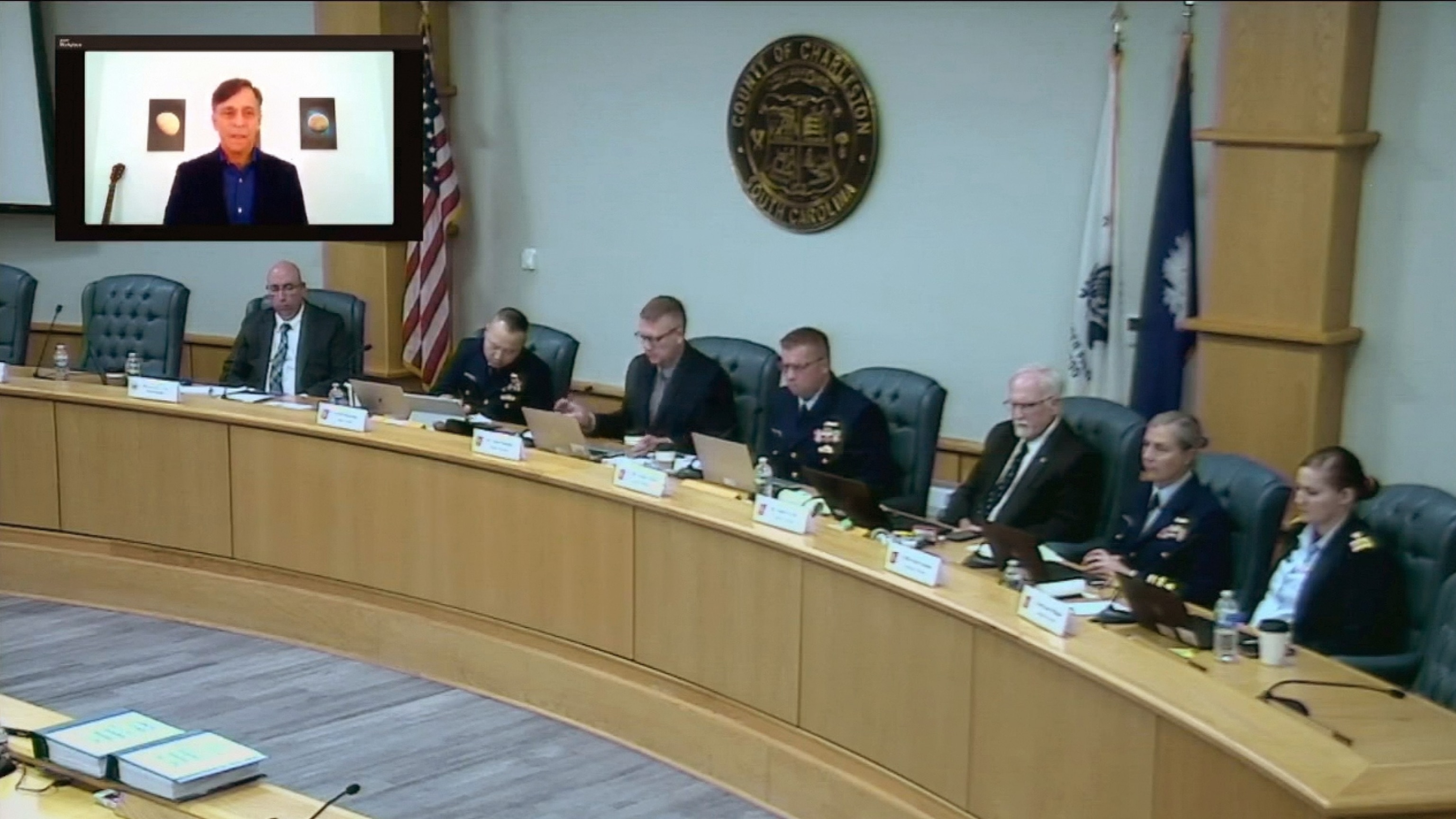
OceanGate co-founder Guillermo Sohnlein testifies at the Titan marine board of investigation hearing Sept. 23, 2024, in North Charleston, S.C.
ABC News
He said most active commercial submersibles dive relatively shallow — less than 1,000 meters — limiting how much of the ocean can be explored.
“We wanted to change that,” Sohnlein said. “We wanted to give humanity greater access to the ocean — and specifically the deep ocean, anything deeper than 1,000 meters.”
OceanGate pivots to building own submersible using carbon fiber
Sohnlein said they eventually realized they would need to build their own submersible to achieve that business model.
“If you think about our business requirements of being able to carry five people 6,000 meters without a dedicated mothership deployable anywhere in the world — none of the sub builders could really do that,” he said. “Then, if you did factor in the cost, yeah, it was going to be ridiculously expensive.”
Sohnlein said Rush “convinced ourselves that it’d be possible to build a sub that would meet all of our business requirements.”
Sohnlein said they started looking at carbon fiber as a potential alternative for a pressure hull.
“That’s not a novel idea,” he said. “It wasn’t innovative, it was just something that we started looking at while I was still there.”
Roy Thomas, an engineer with the American Bureau of Shipping, testified during the hearing on Monday that under ABS underwater rules, carbon fiber pressure hulls are “not acceptable materials for submersibles.”
“They have very low resistance to impact loads, and the hull is susceptible to deformation under applied external loading,” he said.
Rush became CEO of OceanGate in 2013, as the company shifted to developing its own submersibles.
“We were transitioning from an operations phase to an engineering phase, and that was really his strength and not mine,” Sohnlein said of Rush. “It made sense for him to take the reins of the company.”

OceanGate co-founder Guillermo Sohnlein testifies at the Titan marine board of investigation hearing Sept. 23, 2024, in North Charleston, S.C.
ABC News
Sohnlein said he made the “difficult decision” to leave the company at that point because there wasn’t going to be much for him to do in terms of operations.
Sohnlein said he still retains approximately 500,000 common shares in OceanGate but has “basically resigned myself to the fact that I’m probably never going to see anything out of that equity stake.”
OceanGate suspended all exploration and commercial operations after the deadly implosion.
OceanGate co-founder never went on Titan
Sohnlein said he was offered “many times” to go on dives on the Titan, though he never did.
“As a shareholder, I didn’t want to take up room in the sub. I wanted to make that available for the people that the dive was intended for,” he said, people for whom seeing the Titanic was their “life dream.”
He also said he just wasn’t interested in going to the Titanic.
“Neither Stockton nor I were ever driven by tourism,” he said. “We were never motivated by going somewhere that people had already been before. The reason we got into this was because we both wanted to explore. We wanted to not only explore ourselves, but create the technologies that would allow us to explore the ocean.”
“So going to see a shipwreck that had already been well-documented, and that a bunch of people had already gone to, that didn’t excite me. It didn’t excite Stockton,” he continued.
Sohnlein reflected on a conversation when Rush told him he did want to conduct the first test dive of Titan down to 4,000 meters solo. He said Rush told him, “I don’t want anybody else in the sub. If anything happens, I want it to only impact me. It’s my design. I believe in it. I trust it. I don’t want to risk anybody else, and I’m going to go by myself.”
In addition to Rush, those killed in the Titan implosion included French explorer Paul Henri Nargeolet, British businessman Hamish Harding, Pakistani businessman Shahzada Dawood and his 19-year-old son, Suleman.
The hearing into the implosion is scheduled to run through Friday.
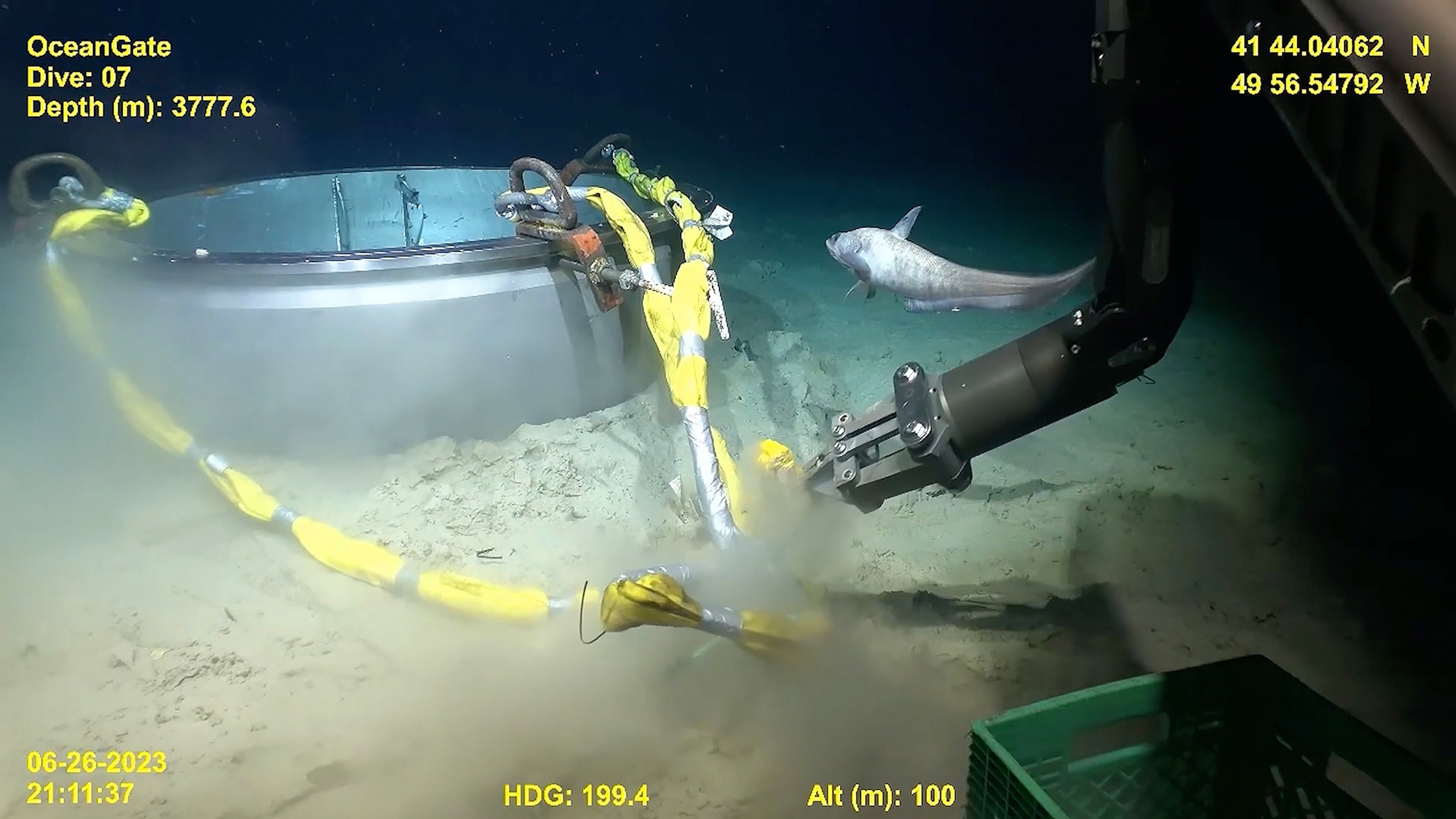
The Coast Guard Marine Board of Investigation released remotely operated vehicle footage from the Titan submersible incident salvage operation conducted on June 26, 2023, during a hearing Sept. 23, 2024, in North Charleston, S.C.
Pelagic Research Services/USCG
In his closing remarks, Sohnlein said he doesn’t know what happened but he hopes they find “valuable lessons learned.”
“This was not supposed to happen,” he said. “This shouldn’t have happened, five people should not have lost their lives.”
He also said he hopes others are inspired by his and Rush’s mission.
“This can’t be the end of deep ocean exploration. This can’t be the end of deep-diving submersibles, and I don’t believe that it will be,” he said. “But I hope that someday, in the near future, we’ll look back on this time as a major turning point in human history — when the global, general public finally took an active interest in all of our efforts, everything that all of us do to explore the deep oceans, to study them and to preserve them.”
OceanGate is a company that has made waves in the world of deep-sea exploration with its innovative approach to building submersibles. Co-founder and CEO, Stockton Rush, recently sat down to discuss the unexpected journey that led the company to develop its own submersible.
The idea for OceanGate was born out of a passion for exploring the depths of the ocean and a frustration with the limitations of existing submersibles. Rush and his co-founder, Ian Griffith, saw an opportunity to create a new kind of submersible that could go deeper, stay underwater longer, and provide a more immersive experience for researchers and explorers.
The journey to building their own submersible was not without its challenges. Rush explained that one of the biggest hurdles was securing funding for the project. “We had a vision for what we wanted to create, but we needed the resources to make it happen,” he said. “It took a lot of persistence and determination to convince investors that our idea was worth backing.”
Another challenge was finding the right team to bring their vision to life. Rush emphasized the importance of surrounding oneself with talented and passionate individuals who share the same goals. “Building a submersible is a complex and challenging endeavor,” he said. “It requires a diverse set of skills and expertise, from engineering to marine biology to project management. Finding the right people to work with was crucial to our success.”
Despite the obstacles, OceanGate was able to overcome them and successfully build its own submersible, the Titan. The Titan is a five-person submersible capable of diving to depths of 4,000 meters, making it one of the most advanced deep-sea exploration vehicles in the world.
Rush believes that the unexpected journey OceanGate has taken in building its own submersible has been instrumental in shaping the company’s identity and mission. “We set out to create a tool for exploring the ocean, but along the way, we discovered so much more,” he said. “We learned about the importance of perseverance, collaboration, and innovation. And we gained a deeper appreciation for the wonders of the deep-sea environment.”
Looking ahead, Rush is excited about the future of OceanGate and the opportunities that lie ahead. “We have big plans for expanding our fleet of submersibles, conducting groundbreaking research, and inspiring the next generation of ocean explorers,” he said. “Our unexpected journey has only just begun, and I can’t wait to see where it takes us next.”
